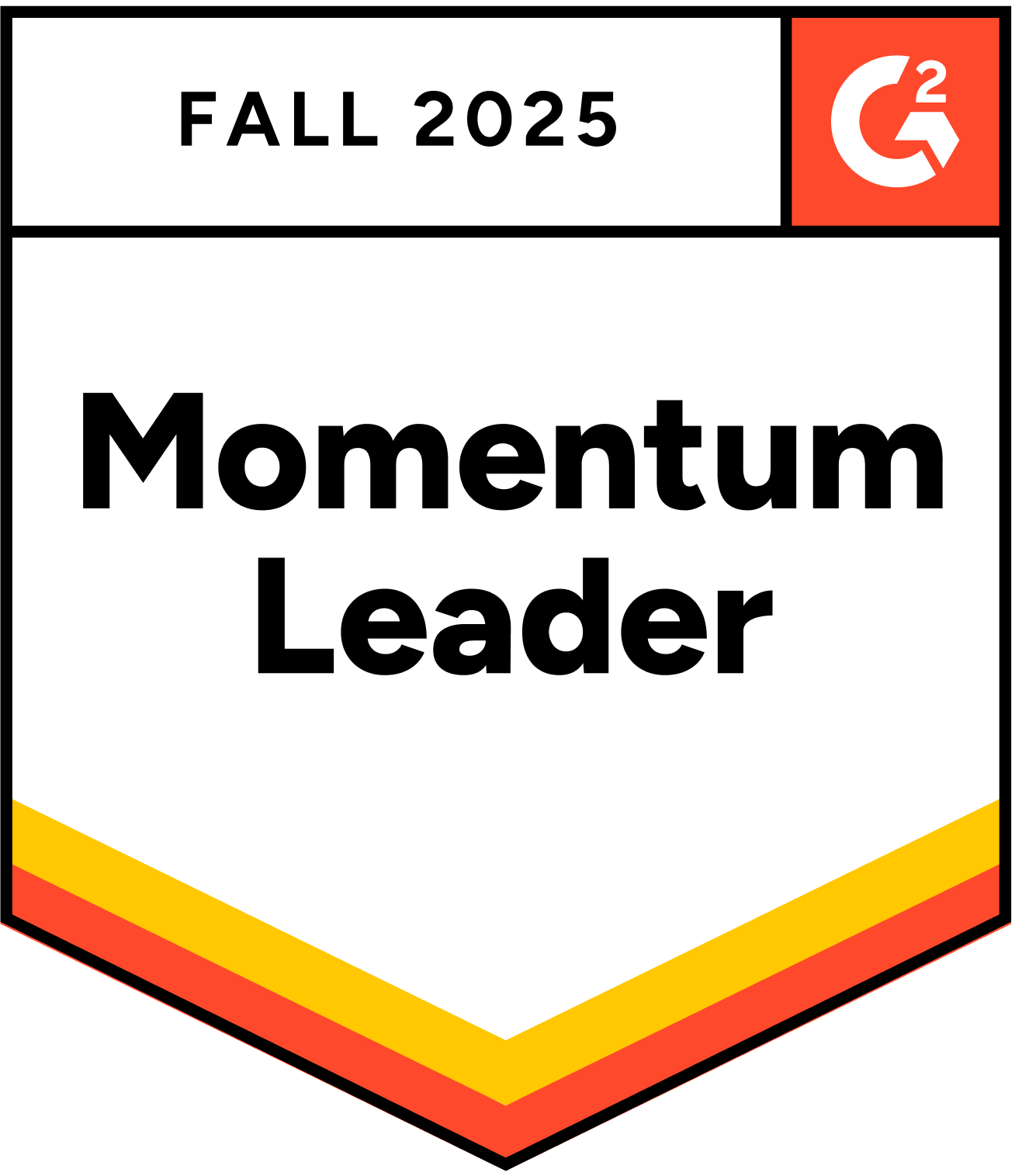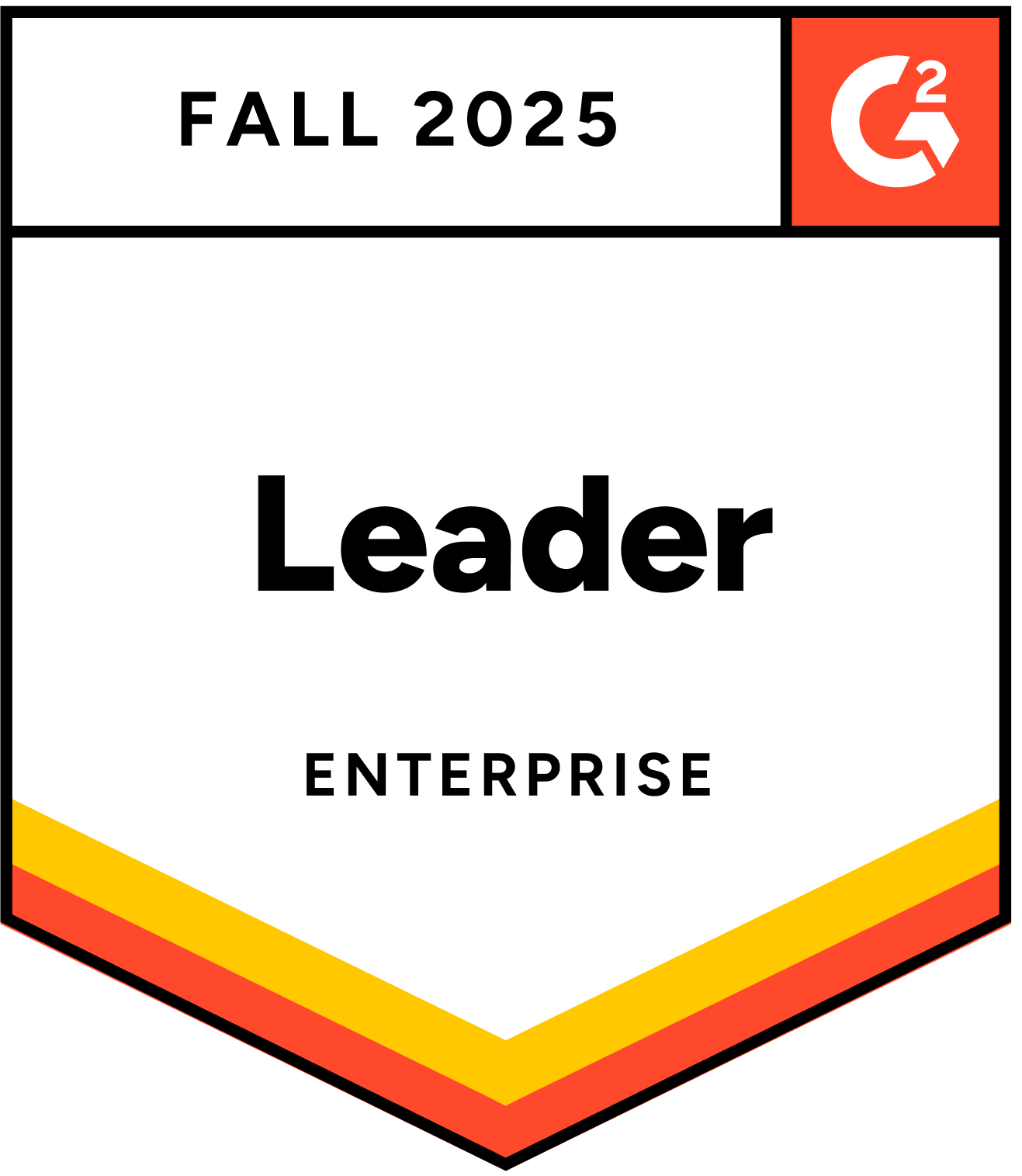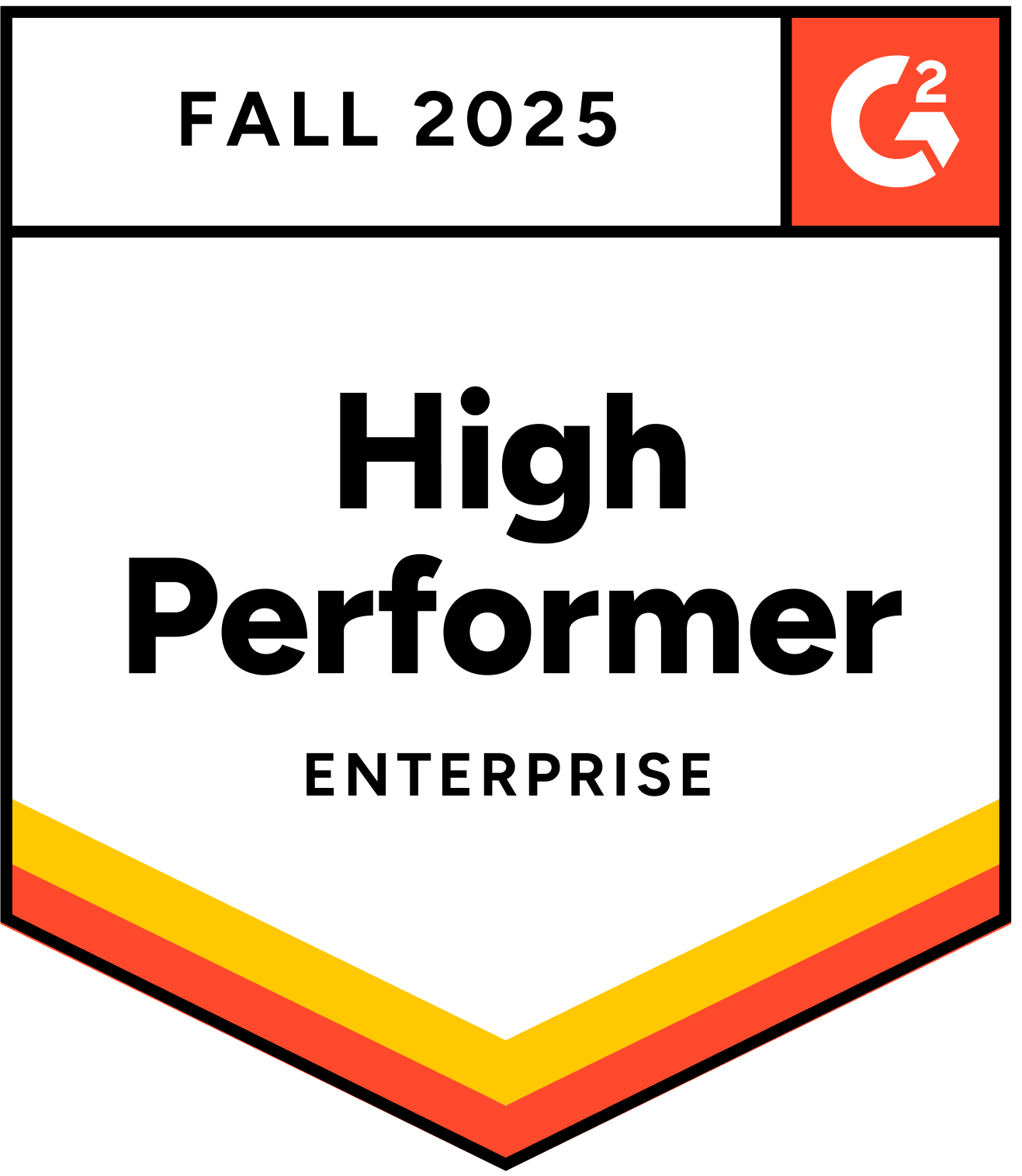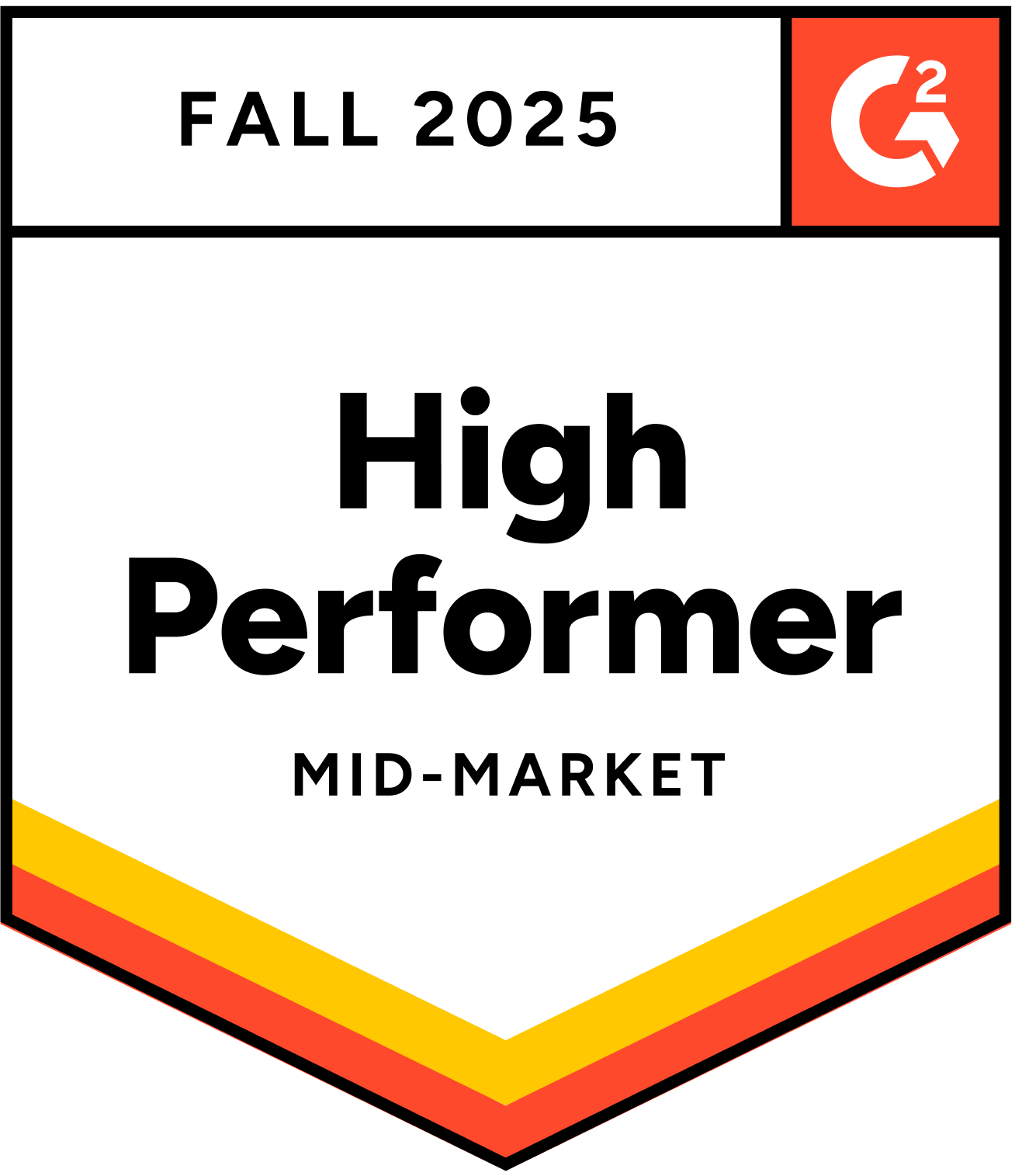Summary
Talent sourcing is about finding and engaging the right people before they even apply. It’s a proactive strategy that combines research, relationship-building, and smart use of data to uncover high-potential candidates across platforms like LinkedIn, job boards, and niche networks. By nurturing long-term talent pipelines, recruiters can stay ahead of demand and make every hire more strategic and efficient.
What is Talent Sourcing?
Talent sourcing is a proactive approach, identifies qualified candidates to fill open positions. Broadly speaking, it involves identifying, engaging, and converting them into applicants.
An ideal talent sourcing strategy focuses on understanding an organization’s current and future supply and demand needs.

How is talent sourcing different from recruitment or talent acquisition?
While some people use the terms “talent sourcing,” “recruitment,” and “talent acquisition” interchangeably, there are subtle differences between the three.
Talent acquisition refers to the entire process of finding, hiring, and retaining. Think of this as the overarching function that houses sub-processes like sourcing and recruitment. The goal of talent acquisition is to build a future-ready talent strategy that marries effective sourcing with recruitment.
So, what does recruitment mean? Recruitment is a more reactive process to address immediate hiring needs like screening, interviewing, shortlisting, and onboarding candidates. Sourcing begins long before recruitment and helps organizations build a pipeline of qualified candidates.
Approaches to sourcing talent
Organizations rely on a combination of different channels and methods to reach potential candidates. The most common methods include:
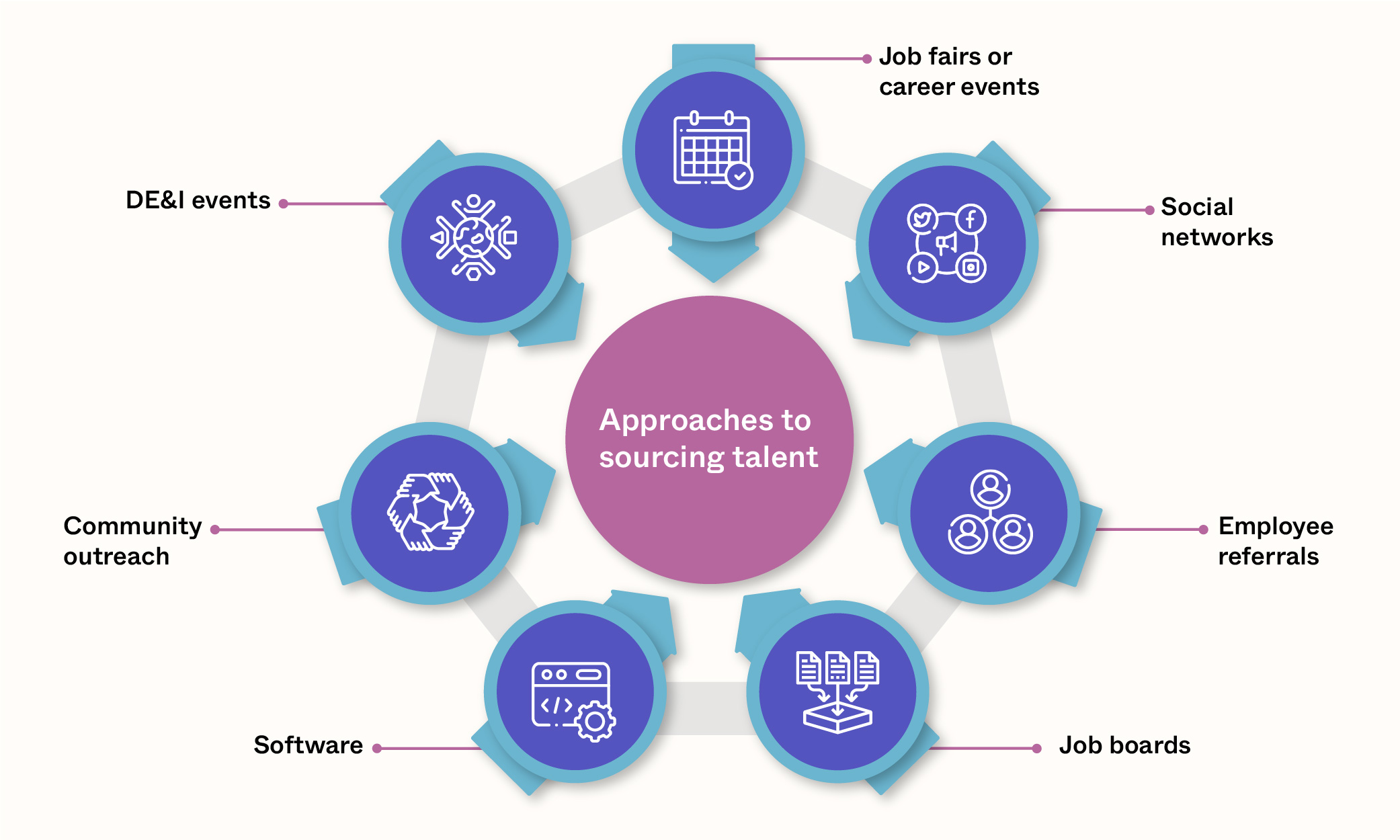
- Job fairs or career events: Employers regularly host events offering potential candidates mentoring opportunities, sharing information about the business and work culture to establish themselves as an employer of choice. Job fairs enable talent sourcing teams to meet with potential candidates in-person and build a compelling case to consider their organization as a prospective employer.
- Social networks: Platforms like LinkedIn and Meta offer a unique virtual platform to start high-value conversations with target candidates. Social networks are also well positioned to develop employer brands.
- Employee referrals: Employees are terrific advocates. Leveraging employees’ experiences to build future teams is one of the most effective sourcing channels available to organizations.
- Job boards: Using virtual job boards to advertise open positions is a popular sourcing technique. Although the most relevant approach for active candidates, these boards can also send alerts about recent postings, creating interest among passive talent as well. A big reason why job boards remain the preferred sourcing channel is scale – they enable organizations to reach the largest possible audience.
- Software: While software is more of a solution to talent sourcing than a channel, it helps talent teams capture data related to application patterns, potential candidates, and high-level process data. It also enables users to automate and scale sourcing activities across different channels. For instance, software can help automate job postings based on specific hiring or role objectives.
- Community outreach: Community outreach is a long-term investment to improve sourcing and talent acquisition outcomes. This could include volunteering for charitable causes, taking steps to address climate change, or establishing policies related to gender inequity. Sourcing through community building is not a quick solution, but it offers attractive returns in the long run. With more candidates wanting to work with purpose-led companies, community outreach is critical to both employer branding and engagement.
- DE&I events: Diversity, equity, and inclusion (DE&I) events are designed specifically to share information about jobs and company culture with candidates from underrepresented backgrounds. Like community outreach and other career fairs, DE&I events are a long-term approach to cultivating the employer brand among diverse candidates. With DE&I being top of mind for organizations around the world, such events are a sure-fire way to identify and engage candidates.
From vision and objectives, to understanding underrepresented job seekers, and designing an inclusive approach to hiring, we’ve got you covered.
Looking To Up Your DE&I Game?
The Sourcing Maturity Curve
When it comes to sourcing, the maturity of a given organization’s approach will vary. This can be broken down into four major stages of development:
- Chaotic: In this stage, an organization’s sourcing strategy is typically reactive. Talent acquisition teams only begin sourcing when there’s an open role to fill.
- Inconsistent: Talent acquisition teams experience some success with their sourcing but cannot replicate this success consistently. At this stage, success is driven by individuals and not processes.
- Systematic: Organizations have a process that works and tools/technologies that enable them to meet their talent needs. At this stage, organizations are more focused on tactical execution rather than designing a forward-looking strategy.
- Strategic: Organizations have the measurements, automation, and continuous improvement that allows them to source and hire great talent, at will.
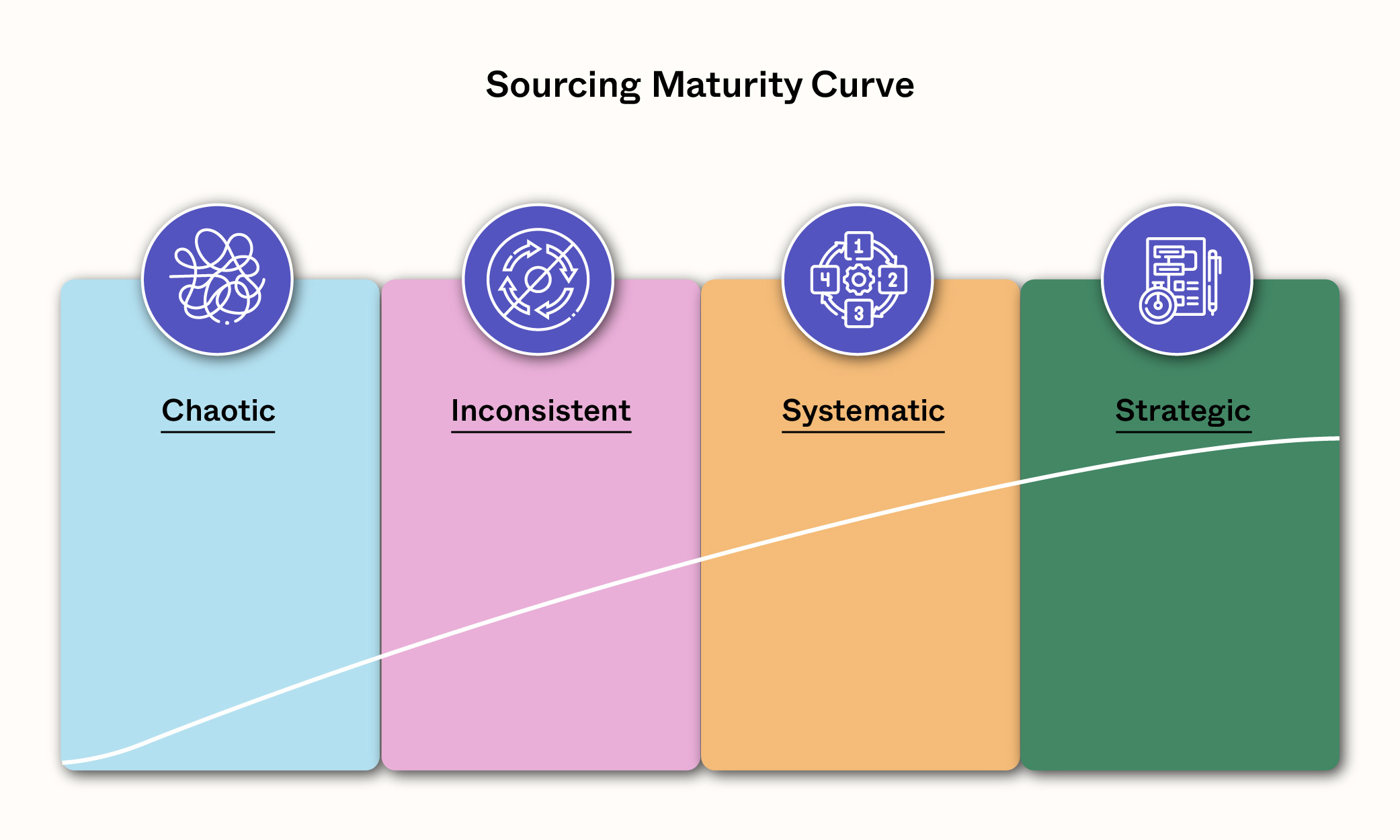
It is important to remember that these stages are not sharply defined, but rather a spectrum.
How Programmatic Can Take Sourcing from Chaotic to Strategic
Solutions like programmatic job advertising play a crucial role in helping organizations move from chaotic to strategic.
For organizations on the less mature end of the sourcing maturity curve, there is usually a lack of planning and foresight when it comes to the business’s talent. This starts early on, when a role opens up and the TA team is under the gun to hire someone “quickly.” There is little alignment between stakeholders and it is nearly impossible to take an informed approach to hiring. The recruiter wants to fill the position, while the hiring manager may be too busy to craft a job advertisement or description.
Here’s where a solution like programmatic brings in a lot of clarity. Programmatic platforms do most of the heavy lifting when it comes to automating sourcing tasks like job posting, enabling hiring managers and recruiters to understand what job descriptions should look like, and finally, offering visibility into hiring performance data – allowing the sourcing team to monitor and improve KPIs.
Let’s look at specific programmatic use cases to understand the journey:
- Business impact metrics
Programmatic platforms allow users to track metrics that impact both talent acquisition and the business bottom line, rather than provide vanity metrics. This includes cost per hire (CPH), cost per apply (CPA), and more across all recruitment media. They also allow users to monitor sourcing impact in real-time and provide valuable insights on efficiency.
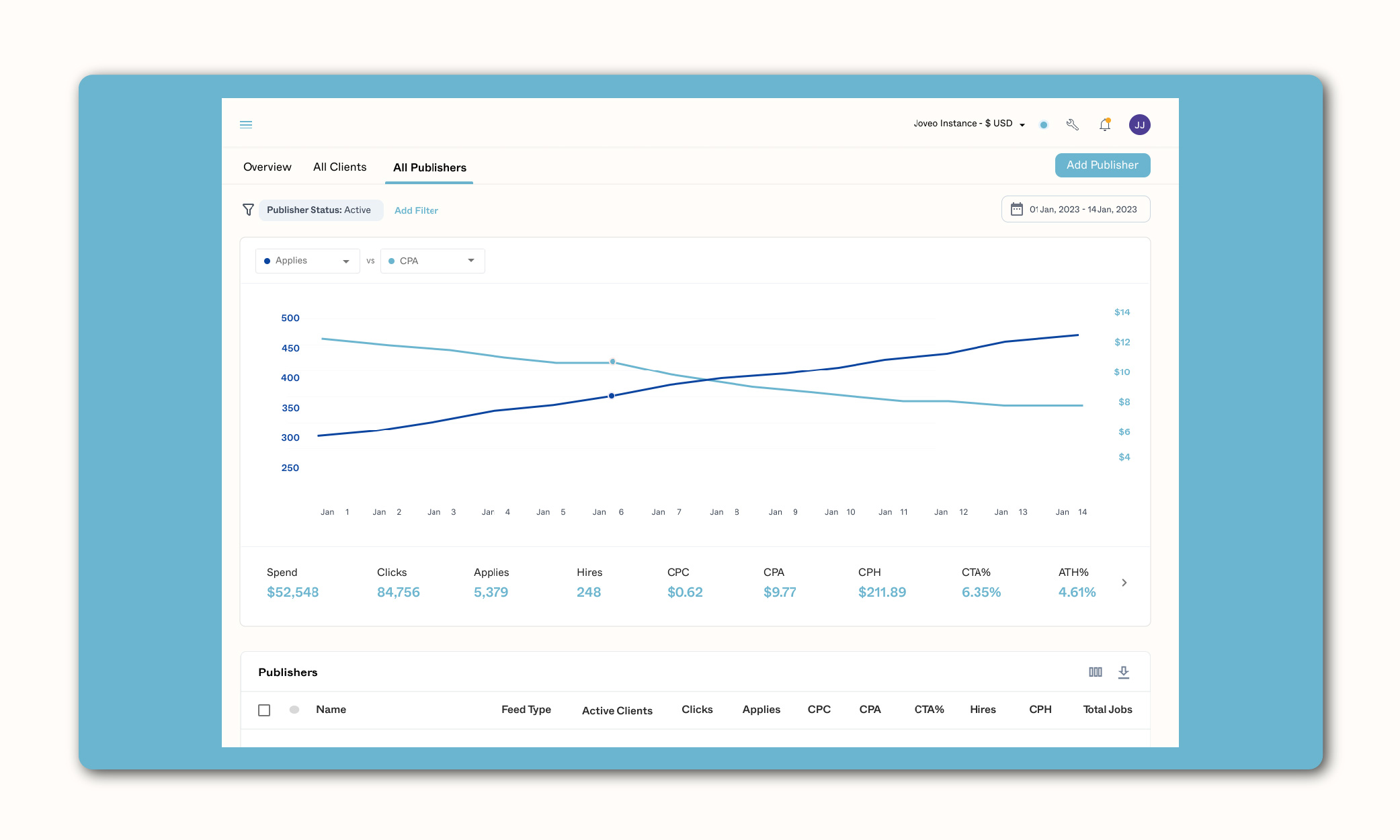
- Data-driven media planning
An intelligent programmatic platform allows recruiters to execute recruitment media campaigns by activating data to target and attract qualified candidates looking for jobs. The platform also helps allocate media spending to the most efficient sources, taking the guesswork out of budgeting and spend allocation. Ultimately, recruiters are able to make better decisions about their recruitment media spend.
- Intelligent automations
The underlying algorithms powering a programmatic platform allow you to automate job distribution across best-fit sources based on volume, cost, and time to hire goals. In addition, programmatic platforms also offer expanded reach beyond traditional big brand job boards to marketplaces that can help with initiatives like diversity and inclusion, early career hiring, and hard-to-find skills.
- Industry, job-role, and location-specific data
An ideal programmatic solution will also offer insights based on historical data for industries, locations, and job roles. So, for instance, if you are hiring for nurses in Texas, your programmatic partners could help you understand what locations have more sourcing success, what the salary ranges look like, and how the healthcare industry has responded to other macroeconomic factors like inflation, skills shortage, etc.
While it would be incorrect to suggest that a programmatic platform alone can take your sourcing from chaotic to strategic, it does play a big part in helping organizations with high-volume needs make that transition. Ideally, a programmatic platform will work with multiple recruiting tools like applicant tracking solutions and other databases. However, programmatic’s true value lies in driving visibility in performance and enabling hiring teams to source at will. Here’s where features like intelligent automations, data-driven media planning, and industry data come into the picture.
Conclusion
The best talent is in high demand. And it’s crucial for organizations to be strategic if they want to win in an unpredictable business environment. Just because the landscape is chaotic, doesn’t mean that your talent sourcing efforts need to be! Programmatic offers an easy transition for organizations looking to move the needle on their hiring maturity. The data, insights, and the ability to engage with candidates at scale make programmatic an indispensable hiring solution.
See us in action to see how Joveo can take your sourcing game from good to great!
FAQs
What is the meaning of talent sourcing?
Talent sourcing is the proactive process of identifying, attracting, and engaging potential candidates before a role opens. It focuses on building qualified pipelines, nurturing relationships, and ensuring organizations have access to the right talent when hiring needs arise.
Why is talent sourcing important?
Effective sourcing shortens time-to-hire, improves candidate quality, and reduces hiring costs. By building strong talent pools early, organizations stay ahead of market shifts, strengthen their brand presence, and ensure a consistent flow of qualified candidates across priority roles.
What does a talent sourcer do?
A talent sourcer scouts potential candidates, researches talent markets, builds pipelines, and engages prospects through targeted outreach. They collaborate closely with recruiters, provide insights on availability and skills, and create the foundation for faster and more informed hiring decisions.
What are the key strategies for effective talent sourcing?
Strong sourcing strategies combine targeted outreach, accurate role calibration, multi-channel search, competitive messaging, and consistent nurturing. Sourcers should leverage data, optimize their search strings, personalize communication, and continuously refine approaches based on market trends and hiring outcomes.
What are the different ways to source talent?
Talent can be sourced through job boards, social platforms, referrals, online communities, networking events, and talent marketplaces. Many teams also tap into internal mobility, industry databases, and passive candidate outreach to expand reach and diversify their pipeline.
What is the difference between talent sourcing and recruiting?
Talent sourcing focuses on identifying prospects and building pipelines, while recruiting drives candidates through interviews to final hire decisions. Sourcing fuels the top of the funnel; recruiting manages evaluation, selection, and closing – working together to improve hiring success.
How is talent sourcing different from recruitment or talent acquisition?
Sourcing is proactive and pipeline-driven, recruitment is reactive and role-specific, and talent acquisition is strategic and long-term. Together, they create a unified approach: sourcing finds talent, recruitment assesses it, and talent acquisition shapes workforce planning and employer brand strategy.
How can technology improve talent sourcing efforts?
Technology enhances sourcing with automated search, AI-based match recommendations, programmatic advertising, CRM outreach, and real-time market insights. There are tools that help teams scale efficiently, find relevant talent faster, and optimize every touchpoint with data-backed precision.
What role does employer branding play in talent sourcing?
Employer branding directly influences response rates and conversions. A strong brand communicates culture, purpose, and growth opportunities – attracting more engaged candidates. It helps sourcers stand out in competitive markets and builds trust long before a candidate enters the interview process.
How can programmatic advertising take talent sourcing from chaotic to strategic?
Programmatic advertising automates where, when, and how jobs are promoted across channels. By using real-time data, performance optimization, and precise targeting, platforms like Joveo eliminate guesswork and reduce waste, strengthen pipelines, and transform sourcing into a measurable, strategic advantage.


